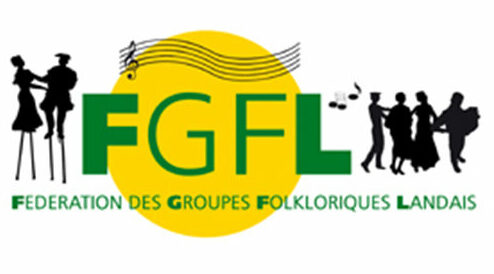The Traditional Boy’s Costume Includes:
– A beret, made of wool or felt
– A white shirt, usually linen or cotton
– A neck ribbon, worn like a tie
– A sleeveless vest
– A sheepskin coat, known as a pelisse or prisse, worn with the wool on the outside
– A wide belt, about 3.5 meters long, made of unbleached flannel, black wool, or black or blue cotton
– A “cuyoun”, a traditional gourd or flask
– Trousers, either plain black or grey with vertical stripes
– A pair of “guarematches” or “caousots”, hand-crocheted with a special stitch to make them stiff and waterproof
– A pair of white socks
– Footwear: white or black espadrilles, or wooden clogs, with or without heels. They were often worn barefoot, sometimes with straw, felt pads, or thin leather inserts (basanes).
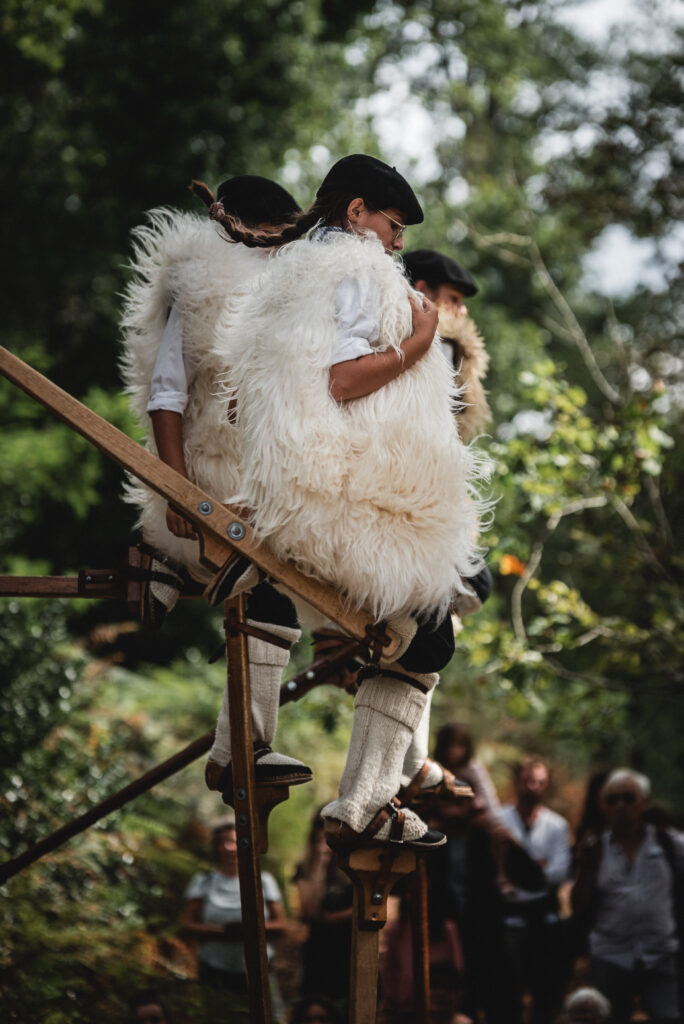
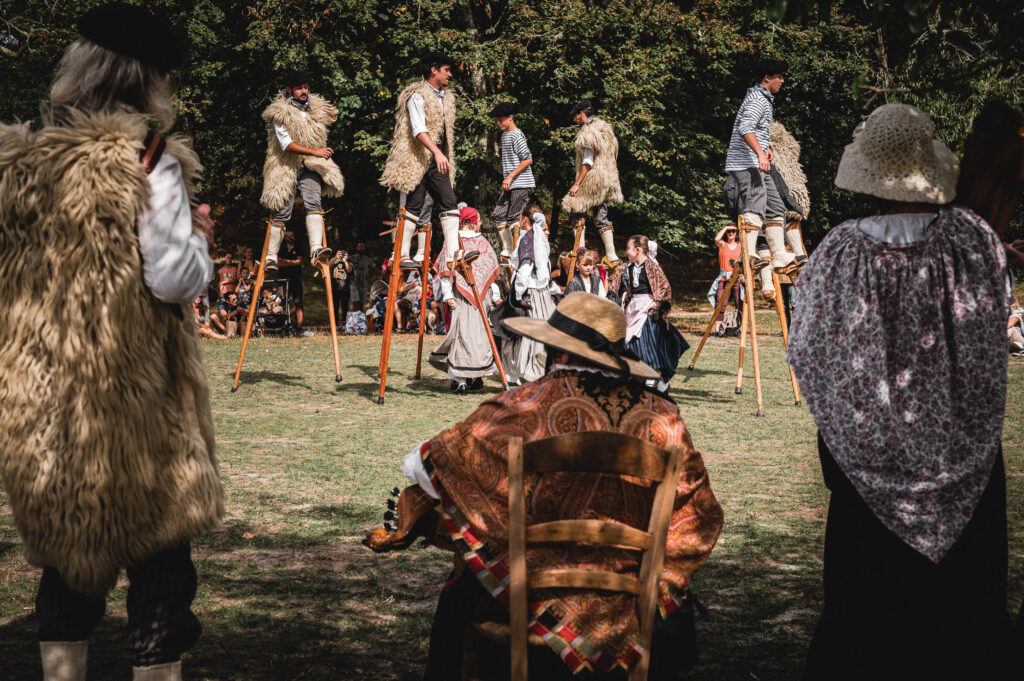
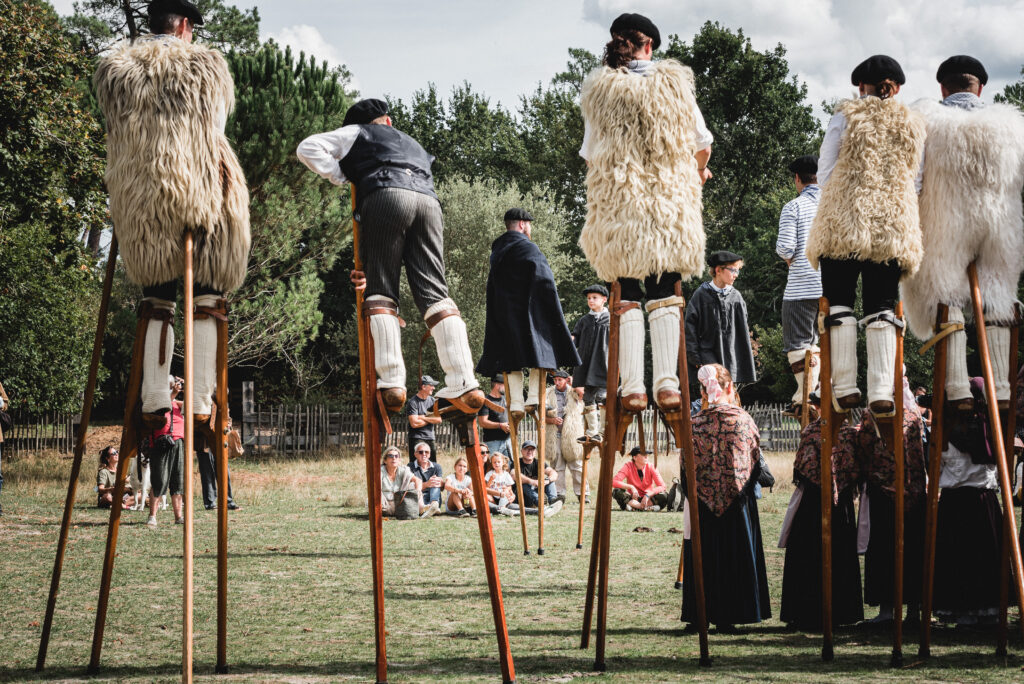
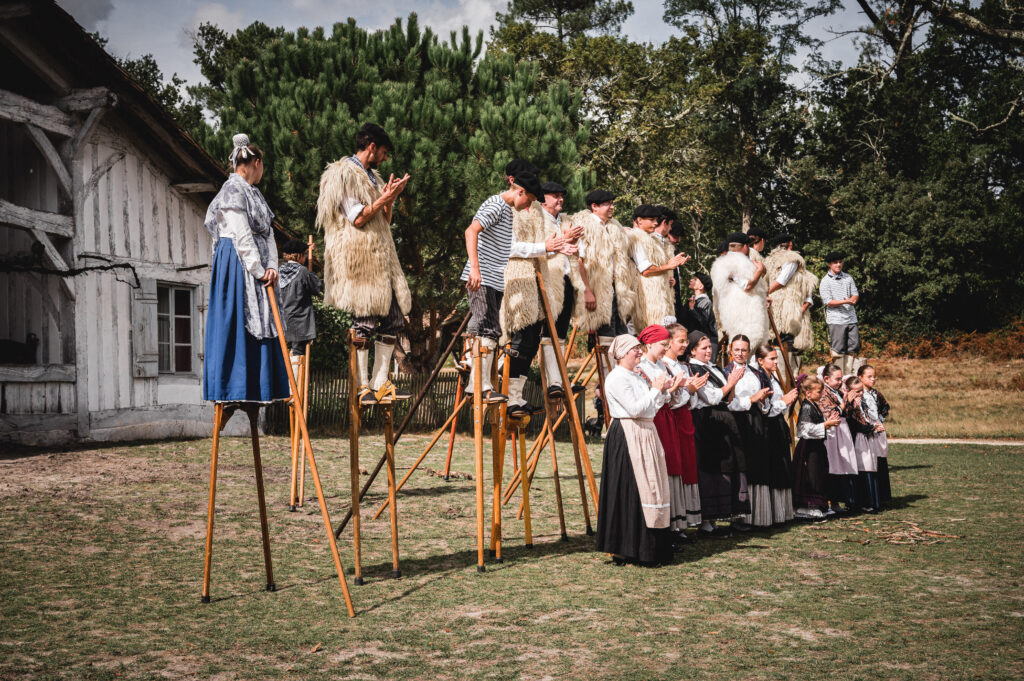
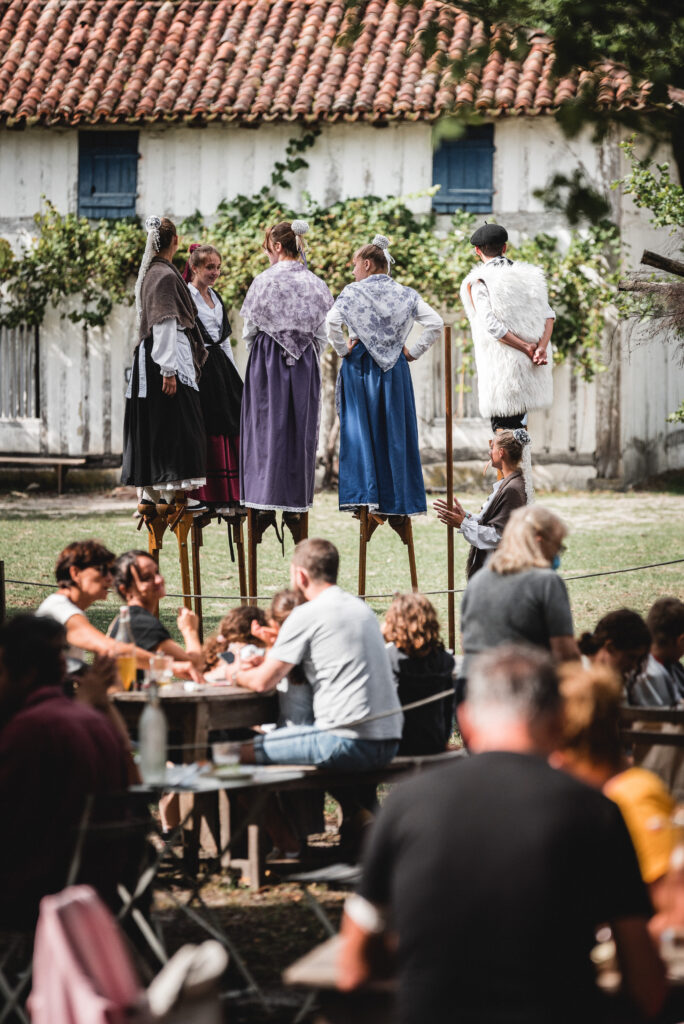
The Traditional Girl’s Costume Was Usually Dark:
Women often wore mourning clothes for extended periods, which influenced the style and color of their outfits.
It typically includes:
– A long, wide wool skirt reaching the ankles
– A long white petticoat, often embroidered or trimmed with cotton lace
– A pair of loose, mid-length embroidered underpants called panti, or split drawers known as piche-biste, meaning “pee quickly”
– A white blouse, often embroidered or lace-trimmed, with decorative chest details
– An apron (also called débantaou), in colors ranging from black to white
– A head covering, which could be a scarf, a serbieute, or a bun cover
– A shawl (fichu), made of wool or cashmere
– A cape, known as pandelan or pandoy de lan, made of pure wool, worn in cold and damp weather
– A pair of white wool socks
– Footwear: sandals, white espadrilles, or black leather shoes
